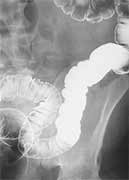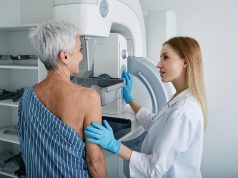Still, only 10 percent of cases occur in younger group, researchers find
FRIDAY, Jan. 30, 2015 (HealthDay News) — Although the overall rate of colorectal cancer (CRC) has fallen in recent decades, new research suggests that over the last 20 years the disease has been increasing among young and early middle-aged American adults. Results of the study were published in the December issue of the Journal of Adolescent and Young Adult Oncology.
The study focused on data collected by the California Cancer Registry. This registry included information on 231,544 CRC cases diagnosed between 1988 and 2009. Half the cases were in men, and 71 percent occurred in whites. Less than half a percent (0.4 percent) of those with CRC were between the ages of 20 and 29. Two percent were between the ages of 30 and 39 and 7 percent were between the ages of 40 and 49 when diagnosed with CRC.
The researchers found that between 1988 and 2009, the biannual CRC rates had been rising by 2.7 percent among males 20 to 29 and 40 to 49. Among males 30 to 39, the biannual increase was found to be even higher, amounting to 3.5 percent. In young women, the increases were even higher. Women aged 20 to 29 saw a 3.8 percent biannual increase, according to the study. Those in their 30s saw a 4.5 percent increase, and women in their 40s had a 2.6 percent biannual increase. By contrast, both males and females in their 50s, 60s, and 70s saw a decrease in their CRC rates during the study period.
“We’re not saying the proportion is shifting,” study coauthor Jason Zell, D.O., M.P.H., an assistant professor in the departments of medicine and epidemiology at the University of California, Irvine, told HealthDay. “Most colon cancer is still happening to older people. But I do think we need to do a much better job at early-age detection. Because another thing we observed is that those young adults who get colon cancer have a higher stage of cancer at diagnosis. And that has terrible implications when we look at survival.” But what exactly is driving the trend? “That’s the 20-million-dollar question right there,” said Zell, who acknowledged that there is no simple explanation at hand. “But what I can say is that we need more awareness of the trend among both patients and doctors. Because at this point, key symptoms among young adults, like blood in the stool, weight loss, or other complaints, are often ignored.”
Copyright © 2015 HealthDay. All rights reserved.








